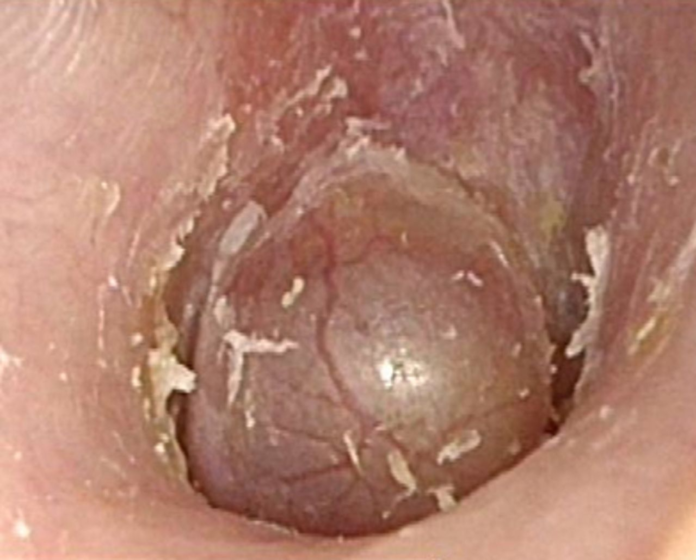Rare case of ballooning herniation
Tympanic membrane herniation is a rare malformation that extends into the auditory canal. It may either be asymptomatic or associated with hearing loss, otalgia, tinnitus and aural fullness. Although the tympanic membrane bulging is common, it is very rare for ballooning herniation to occur in the external auditory canal. The lesion develop from pre-existing defects in the tympanic membrane, or because of positive pressure inside the middle ear. In a similar case, an otherwise healthy 30-year-old Swiss Military Officer presented with otitis media with effusion of the right ear.
The water sports enthusiast presented to his local otolaryngologist. His medical history revealed that he had a 10-year history of recurrent otitis media on the side that was affected. The inflammation would often be associated with otorrhea and perforation of the tympanic membrane. Although showed no remission each time. His previous doctors treated him with antibiotics thrice during the last 12 months. He further complained of slight intermittent otalgia without the presence of otorrhea or vertigo. His hearing ability improved with habitual Valsalva manoeuvres.
The effusion resolved after conservative treatment.
However, two months later the patient presented to the otolaryngologist again. Examination showed a mass of unclear origin within the proximal external auditory canal which persisted even in the following month. Doctors advised a needle aspiration cytology which revealed no significant findings.
Physical examination via ear microscopy further showed a non-pulsating, round, smooth and bullous mass. On palpating with a blunt instrument, the mass was soft. The lesion measured 7 mm and occupied the entire proximal auditory canal, making it difficult to distinguish whether it originated from the tympanic membrane or laterally in the ear canal. The remaining head and neck examination of the patient showed no significant findings.
Autoinflation is known to significantly relieve symptoms in patients. However, doctors recommend that the lesion be treated surgically. Whereas in mild cases observation is considered a reasonable approach. The study states, “habitual Valsalva manoeuvres, the so-called ‘autoinflation’, can transiently relieve symptoms in these patients but are also part of the pathomechanism in the first place”.
References
Rare case of ballooning herniation of the tympanic membrane https://casereports.bmj.com/content/14/5/e241839




